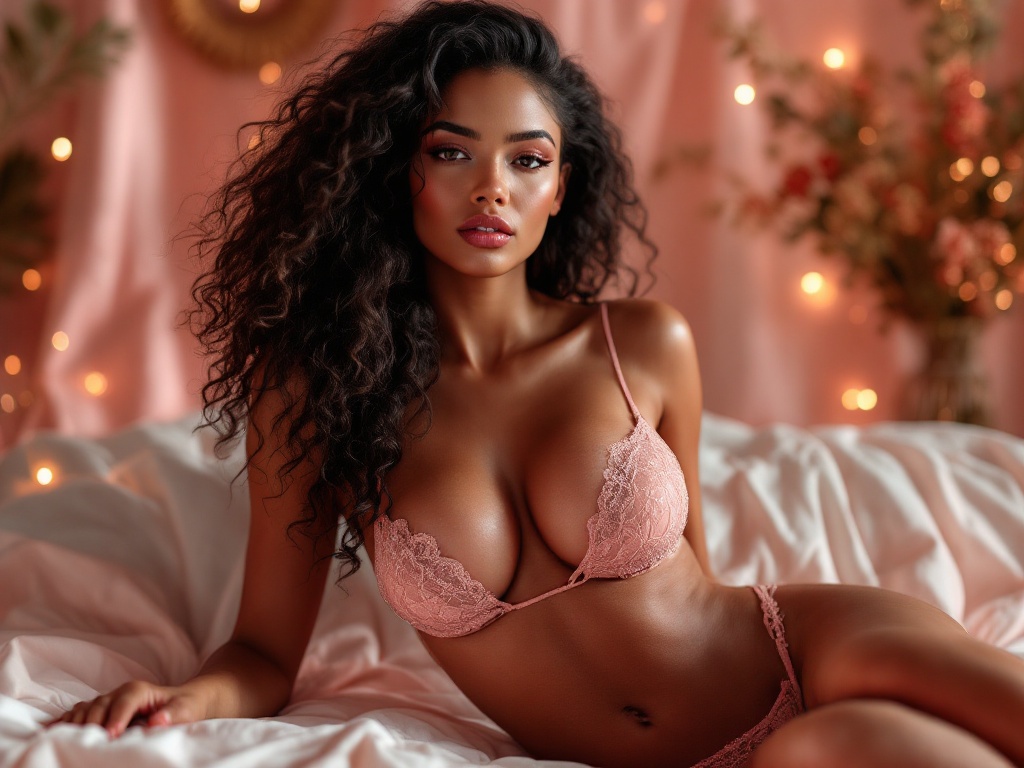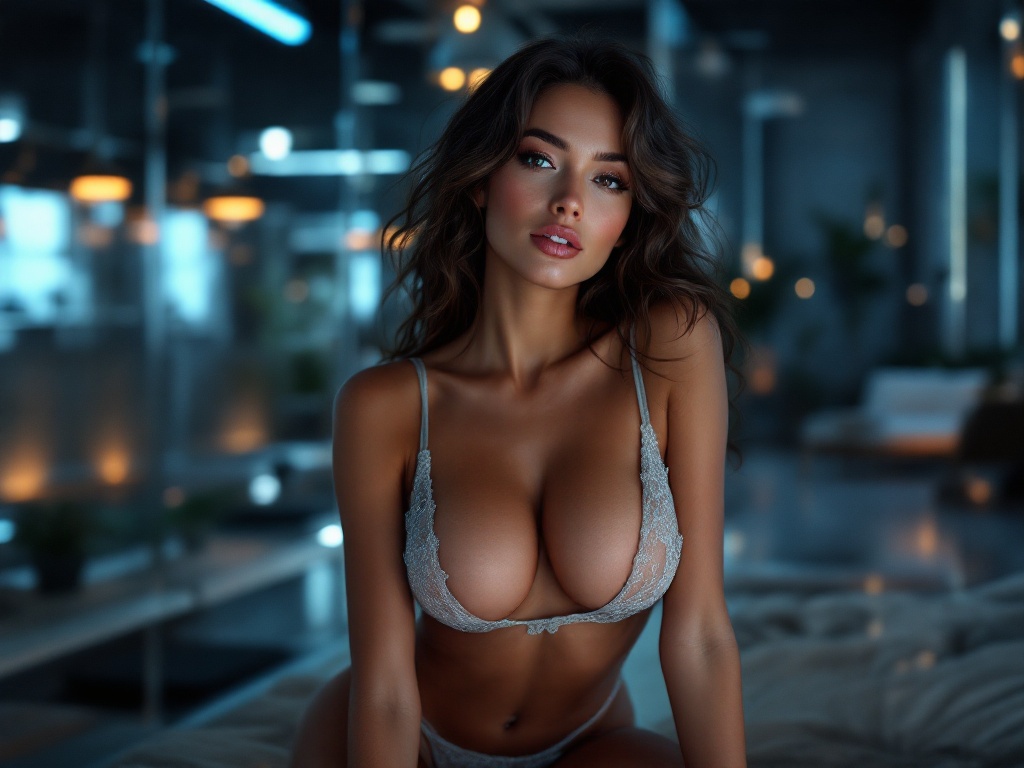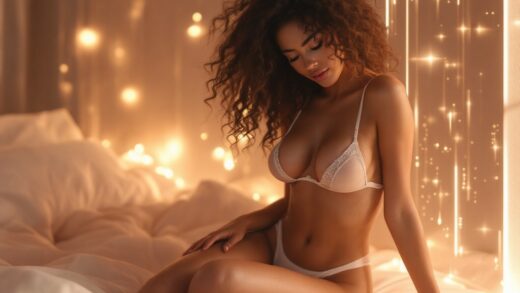The convergence of artistry and technology has sparked groundbreaking innovations, especially within the sphere of erotic expression. Recently, AI-generated erotic art has surfaced as a provocative genre that defies conventional views of creativity and desire. Utilizing algorithms and machine learning, artists are unearthing novel methods to investigate human sexuality, igniting emotions and provoking discourse. These creations extend the frontiers of aesthetic representation while encouraging society to reflect on concepts such as authenticity, consent, and the essence of desire itself. As we plunge further into this captivating realm, we discover not merely an artistic revolution, but also a reflection of the intricate nature of human yearning in the age of digital culture.
To truly grasp the allure of AI-generated erotic art, it is essential to examine its position within the broader narrative of artistic progression. Throughout history, art has served as a vessel for delving into human emotions, fantasies, and desires. The arrival of technology has immensely transformed how art is created and interpreted. The emergence of digital and AI-fueled art signifies a remarkable shift—not only in techniques but also in the fundamental nature of creativity. This raises compelling inquiries: What implications arise when a machine generates art? And how does it alter our perception of eroticism?
The Transformation of Art and Technology
Art has undergone a continual metamorphosis across the ages, embracing innovations from the Renaissance to Impressionism and now charting new territory in the digital domain. Technology has consistently played a crucial role in shaping artistic narratives. The digital revolution has unlocked doors for unparalleled experimentation in style, form, and subject matter. AI amplifies these potentialities by assimilating vast databases, drawing inspiration from centuries of artistry to assemble entirely fresh concepts. This fusion of human creativity and machine intelligence marks a defining moment in the landscape of artistic production.
Today, we witness AI dramatically transforming our interaction with art. To demonstrate this evolution, consider the following list of significant milestones in the journey of art and technology:

- Introduction of the camera obscura in the 1500s, which revolutionized perspectives on visual representation.
- Advancement of photography in the 1800s, enabling authentic portrayals of life.
- Emergence of computer-generated imagery (CGI) in the late 20th century, transforming the film and gaming landscapes.
- Rise of AI algorithms capable of producing visual and literary masterpieces in the 21st century.
Deciphering Human Desire
Human desire has consistently been a core theme in artistic representation throughout the ages, encompassing a vast array of emotions and instincts—often expressed in profound and evocative manners within art. AI-generated erotic art taps into these ingrained desires, portraying them through the prism of computation and technology. The outcome is a distinctive form of representation that invites viewers into a realm of exploration, where fantasies are not merely illustrated but dynamically conjured. Furthermore, it offers individuals the chance to engage with their personal and shared desires in ways that incite reflection and dialogue.
Several elements contribute to the magnetism of AI in depicting human desire:
- Customization: AI algorithms can tailor art to match individual tastes, cultivating a unique experience.
- Exploration: Viewers have the chance to unearth new dimensions of their own desires through immersive interactions.
- Collaboration: The partnership between human creators and AI sparks unprecedented inventive possibilities.
The Creation Process Behind AI Erotic Art
The methodology through which AI composes erotic art is often as captivating as the artworks themselves. Employing machine learning technologies, these algorithms scrutinize extensive repositories of images and artistic styles, enabling them to generate original creations. The algorithms evaluate various aesthetic components such as color, form, and composition to craft pieces that resonate with human audiences. This artistic formulation blurs the distinctions between traditional artistry and machine learning, prompting us to ponder the very nature of authorship in art.
To enhance understanding of this process, the table below outlines essential methods utilized in AI-generated erotic artworks:

| Technique | Description |
|---|---|
| Neural Networks | Mimic the human brain’s image processing capabilities, facilitating advanced pattern detection. |
| Generative Adversarial Networks (GANs) | Involve two competing neural networks that work together to improve the quality of the resulting art. |
| Style Transfer | Incorporates the visual traits of one image onto another, producing a distinctive amalgamation. |
The Influence of AI on Views of Eroticism
The advent of AI-generated erotic art profoundly affects societal attitudes towards eroticism. By shifting the creative focus from human artists to AI, we are confronted with a reevaluation of what we deem appealing, provocative, or taboo. This genre sparks conversations regarding the essence of sexuality and artistry, often igniting debates that transcend mere aesthetic appreciation. While technology ushers in new avenues for freedom of expression, it also introduces challenges and dangers, including the unintended reinforcement of stereotypes and the commercialization of intimacy.
Moreover, such transformations may prompt individuals to reevaluate their own desires and fantasies. AI-generated content presents opportunities for personal exploration but carries potential risks related to addiction or escapism. Recognizing these implications becomes vital as the popularity of AI erotic art continues on an upward trajectory. Here are some important points to ponder:
- AI art has the potential to reshape conventional parameters of eroticism.
- This genre can foster more open conversations about sexual expression.
- Cultural and societal standards may evolve under the influence of this innovative genre.
Ethical Considerations
As with any technological development, ethical considerations stemming from AI-generated erotic art must not be ignored. This domain invites careful scrutiny concerning authenticity and the risk of exploitation, raising significant questions regarding consent. What consequences arise when algorithms utilize images or styles without the consent of the original creators? Additionally, does the production of such work commodify human intimacy, reducing personal relationships to mere aesthetics? These pressing issues underscore the necessity for a comprehensive ethical framework as AI continues to intertwine with human desire in artistic expressions.
The Future of AI Erotic Art
Gazing ahead, the future of AI-crafted erotic art promises thrilling advancements. With the evolution of technology, we may anticipate increasingly personalized art that directly appeals to the distinct desires of individuals. The incorporation of virtual reality could also offer immersive experiences that draw viewers into the art itself. This progression presents limitless possibilities, captivating new audiences and enriching contemporary dialogue surrounding eroticism in art. As technology advances, so will the discourse around authenticity and intimacy, urging us to reconsider the boundaries of creativity in our ever-digitizing world.
Conclusion
In conclusion, the attraction of AI-generated erotic art stems from its capacity to dissect human desires through a lens of innovation. This genre epitomizes the intricate dance between technology, creativity, and societal norms, yielding both opportunities and challenges. As we welcome this new form of expression, it holds the potential not only to redefine our understanding of eroticism but also to deepen our engagement with both personal and collective fantasies. In an era where the line separating the human element from machines continues to diminish, the conversation surrounding AI in art becomes both timely and essential.
FAQ
- What is AI-generated erotic art? AI-generated erotic art refers to sensual or explicit creations produced through artificial intelligence algorithms that analyze human preferences and artistic influences.
- How does AI impact the creative process in erotic art? AI employs machine learning to evaluate extensive datasets of existing artwork and human tastes, enabling it to forge unique pieces that mirror contemporary desires.
- Are there ethical issues concerning AI erotic art? Absolutely, ethical concerns include questions of consent, authenticity, and the risk of exploiting individuals’ images or ideas without appropriate recognition.
- Is AI-generated erotic art deemed genuine art? The definition of art remains subjective, with many arguing that AI-generated works can be classified as art, as they evoke feelings and reflections akin to traditional forms.
- What future developments can we anticipate in AI erotic art? We may witness heightened customization, enhanced integration of virtual reality experiences, and a more expansive cultural discourse surrounding eroticism as technology progresses.


